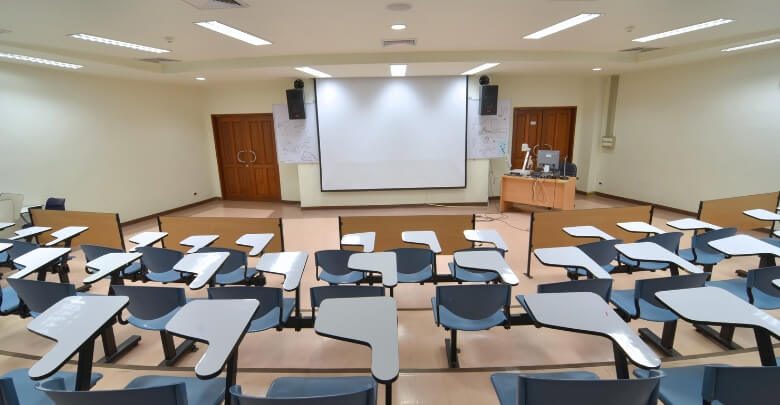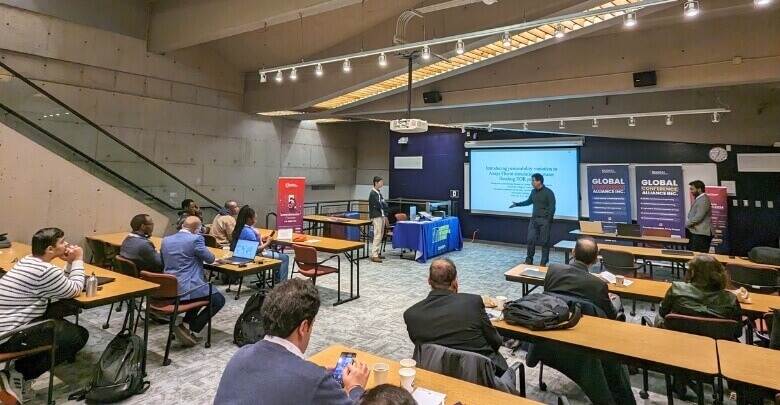Have you ever walked into a conference room that felt dull and uninspiring? It’s amazing how the right decor can transform a space from mundane to motivating! In this guide on how to decorate a conference room? we’ll explore creative ideas that not only enhance the aesthetic appeal but also foster collaboration and productivity.
A well-decorated room can make meetings more enjoyable, inspire innovative thinking, and leave a lasting impression on clients. The atmosphere of your conference room sets the tone for discussions and interactions, making it essential to create a welcoming environment. Whether you’re working with a large space or a cozy nook, simple changes can make a big difference.
Let’s dive into practical tips and tricks that will help you craft a conference room that everyone will love to gather in.
What is the Purpose of Decorating a Conference Room?
Decorating a conference room goes beyond aesthetics; it serves several important purposes that can significantly enhance the overall meeting experience.

Creates an Inviting Atmosphere
A well-decorated conference room sets a welcoming tone as soon as attendees enter. Warm colors, comfortable furniture, and thoughtful design elements make the space feel less intimidating. When people feel at ease, they’re more likely to engage and share their thoughts openly, leading to more dynamic discussions.
Encourages Participation and Collaboration
An aesthetically pleasing environment fosters a sense of belonging and encourages attendees to contribute. When a space feels inviting, participants are less likely to hold back their ideas or questions. This openness can result in more collaborative brainstorming and a greater exchange of ideas, which is crucial for effective teamwork.
Inspires Creativity and Focus
Colors, artwork, and plants can significantly impact mood and mindset. For example, vibrant colors can energize a group, while calming hues can help focus attention. Incorporating natural elements, like plants, can also improve air quality and create a soothing ambiance. This environment can stimulate creative thinking, making it easier for teams to generate innovative solutions.
Enhances Professionalism
You need to decorate the conference room to demonstrate professionalism and attention to detail. It shows clients and partners that your organization values quality and is serious about its work. This professionalism can build trust and establish a solid foundation for business relationships, making meetings feel more significant.
Reflects Brand Identity
The decor of a conference room should align with your company’s values and branding. Using company colors, logos, or themed decor can create a cohesive look that reinforces your brand’s identity. This visual consistency helps create a memorable impression, making it clear who you are as a business.
Improves Productivity
An inspiring and well-organized environment can enhance focus and efficiency during meetings. When the room is free from clutter and thoughtfully arranged, it allows for better flow and organization of ideas. Ultimately, a well-decorated space can lead to shorter, more productive meetings, allowing teams to accomplish more in less time.
In summary, decorating a conference room serves multiple purposes, all aimed at creating a space that enhances collaboration, communication, and productivity. A well-thought-out design can significantly improve the quality of meetings, making it a valuable investment for any organization.
How To Decorate A Conference Room?
Decorating a conference room is more than just making it look good; it’s about creating a space that fosters creativity, collaboration, and productivity. That’s the reason why organizers often ask, “How to decorate a conference room?” Here’s a detailed guide on how to transform your conference room into an inviting and functional space.
Assess the Space
Start by taking a good look at your conference room. Measure the dimensions, including the length, width, and height of the room, and take note of any existing features, like windows, doors, and lighting fixtures. Understanding the layout will help you make informed decisions about furniture placement and decor.
Think about the purpose of the room—will it be used for formal meetings, brainstorming sessions, or training workshops? Tailor your decor to fit these needs, as different activities might require different setups.
Choose the Right Furniture

Optimizing the use of storage space is also essential to maintain a clutter-free environment, which can enhance the overall aesthetic and efficiency of the space. Considering these factors, you can create a conference room that promotes comfort, functionality, and organization.
Select Comfortable Seating
Comfortable seating is crucial in conference rooms, as research shows that uncomfortable seating can lead to increased stress and reduced productivity. Therefore, carefully consider the seating arrangement and select ergonomic chairs that support and comfort the attendees.
Here are a few tips to keep in mind when selecting seating for a conference room:
- Choose chairs with adjustable height to accommodate different body types and preferences.
- Look for chairs with a contoured backrest that supports the spine’s natural curve and promotes good posture.
- Consider chairs with armrests that support the arms and reduce shoulder and neck strain.
Invest in Functional Tables
Investing in functional tables ensures a productive and efficient conference room environment. Customizable solutions are becoming increasingly popular in modern office space, and conference room tables are no exception.
These tables can be designed to suit the specific needs of the users, whether it be a large boardroom table or a smaller collaboration space. With various options available, such as adjustable height or built-in power outlets, customizable tables can enhance the functionality of the conference room.
Moreover, ergonomic design is essential to ensure the comfort of those using the conference room. Conference tables should be designed to promote good posture and reduce strain on the body. Adjustable height tables, for example, can accommodate users of different heights and prevent discomfort caused by prolonged sitting.
Pick a Suitable Color Scheme
The choice of a suitable color scheme for a conference room is an essential aspect of its overall decor, as it can significantly impact the mood and atmosphere of the space. Color psychology plays a significant role in this decision, as specific colors can evoke different emotions and feelings in people.
For instance, blue creates a calming effect, yellow promotes creativity and energy, and green creates a sense of balance and harmony. Therefore, consider the purpose and objective of the conference room before selecting a suitable color scheme. In addition, accent walls can also be used to bring a pop of color to the room without overwhelming the space. This technique involves painting one wall in a bold or contrasting color to draw attention and create a focal point.
When selecting an accent wall, choose a color that complements the other colors in the room and does not clash with the overall color scheme. Ultimately, the choice of color scheme and accent walls should align with the desired mood and atmosphere of the conference room. As we move on to the next section about adding visual elements, remember how the color scheme will interact with other decor elements.
Optimize Lighting
Lighting can make or break a conference room. Take advantage of natural light whenever possible by keeping windows clear and using light, airy curtains that allow sunlight to filter in without being overpowering. For artificial lighting, choose fixtures that provide adequate illumination without being harsh or causing glare on screens.
Adjustable lighting options, such as dimmers or task lighting, can help set the mood for different types of meetings, allowing you to create a comfortable and functional environment tailored to the task at hand.
Add Visual Elements
Incorporating visual elements among the essentials for a conference room can enhance its overall ambiance and aesthetic appeal. Artwork and decorative pieces such as sculptures, paintings, and vases can serve as focal points and conversation starters.
Integrate branding elements such as company logos and colors to create a cohesive and professional look.
Additionally, utilizing technology and audiovisual equipment at conferences, such as projectors, screens, and sound systems, can enhance presentations and facilitate communication during meetings. You should also ensure that the conference room is fully soundproof.
Include Artwork and Decorative Pieces
Decorative accents such as vases, sculptures, and plants can also add a touch of elegance and sophistication to the room. Lighting and flooring choices are also essential when choosing artwork and decorative pieces.
The lighting should complement the artwork and enhance its features, while the flooring should provide a neutral backdrop that does not clash with the art pieces.
To further illustrate the importance of including artwork and decorative pieces in a conference room, consider the following table:
| Artwork Type | Placement | Lighting | Flooring |
| Paintings | Behind the main speaker | Soft spotlights | Neutral carpet |
| Sculptures | In the corners of the room | Bright overhead lights | Hardwood floors |
| Plants | On window sills and side tables | Natural sunlight | Tiled floors |
Integrate Branding Elements
Including artwork and decorative pieces can transform a conference room from a sterile and uninspiring space to a visually stimulating and welcoming one. However, ensure the decor aligns with the company’s brand and visual identity.
This is where integrating branding elements comes in. Brand consistency is vital for any business; the conference room is no exception. The decor should reflect the company’s values, personality, and aesthetics.
Here are some ways to integrate branding elements into the conference room decor:
- Incorporate the company’s logo and colors into the artwork and decorative pieces.
- Display company achievements and milestones through posters, plaques, or certificates.
- Use branded furniture and accessories, such as branded coasters or conference room chairs with the company logo.
Integrating branding elements into the conference room decor makes the space an extension of the company’s identity. It reinforces brand consistency and creates a professional and cohesive environment that aligns with the company’s visual identity.
Utilize Technology and Audiovisual Equipment
Utilizing the latest technology and audiovisual equipment can greatly enhance the productivity and engagement of meetings held in the corporate workspace. Wireless connectivity has become necessary in conference rooms as it allows for seamless and efficient information-sharing among team members. With the rise of remote work, video conferencing has become integral to meetings.
Thus, invest in high-quality audiovisual equipment such as cameras, microphones, and speakers to ensure clear communication and effective collaboration. Interactive displays are also a must-have in modern conference rooms. They provide a dynamic and engaging environment that encourages participation and creativity.
Interactive displays allow presenters to share content in real-time and make on-the-fly modifications, leading to more effective brainstorming and problem-solving sessions. These features allow team members to easily collaborate and engage with the content, leading to a more productive meeting.
Maintaining the space is equally crucial in ensuring the conference room is always ready for meetings. Keep the technology and audiovisual equipment up-to-date and functioning properly. Additionally, regular cleaning and organizing of the space can help create a more professional and welcoming atmosphere, leading to higher engagement and productivity during meetings.
Add Final Touches
Finally, don’t forget about the little details that can enhance the conference room experience. Ensure the space is clean and organized, with essential supplies readily available, such as pens, notepads, and a whiteboard or flipchart.
Adding amenities like water bottles, coffee, or snacks can make meetings more enjoyable and comfortable. Consider updating the decor seasonally or for special occasions to keep things fresh and interesting, allowing your conference room to evolve along with your team’s needs and preferences.
Creative Decoration Ideas for a Conference Room
Transforming a conference room into an inspiring and functional space can significantly enhance productivity and collaboration. Here are some creative decoration ideas that can breathe new life into your meeting environment.
Incorporate a Feature Wall
Consider creating a feature wall that serves as a focal point in the room. You could use bold colors, a unique wallpaper design, or even a mural that reflects your company’s values or mission. This wall can be a canvas for creativity, showcasing the brand’s personality and sparking conversation among team members.
Use Flexible Furniture
Instead of traditional fixed furniture, opt for flexible, modular furniture that can be rearranged easily. Look for tables and chairs that can be moved around to create different layouts for various types of meetings. This adaptability allows you to tailor the space to suit your needs, whether for brainstorming sessions or formal presentations.
Add Greenery and Natural Elements
Plants not only add a touch of nature but also improve air quality and boost mood. Consider incorporating a variety of indoor plants, such as succulents, ferns, or even a small tree. You could also use natural materials for decor, like wooden tables or bamboo blinds, to create a calming environment that promotes creativity and relaxation.
Incorporate Technology Creatively
Instead of hiding technology away, integrate it into your decor. Use stylish cable management solutions to keep cords organized and out of sight. You can also consider a wall-mounted screen for presentations as a part of decorating a conference stage, framed in a way that complements the room’s decor. Having tech that looks good and functions well helps create a seamless meeting experience.
Personalize with Artwork and Inspiration
Decorate the walls with artwork that inspires your team. This could include motivational quotes, local artists’ work, or team achievements. Personalizing the space with images that reflect your company culture not only enhances aesthetics but also instills a sense of pride and ownership among employees.
Use Multi-Functional Spaces
Consider designing areas within the conference room that serve multiple purposes. For example, a corner can be set up with a small coffee station or snack bar, encouraging informal discussions during breaks. A cozy reading nook with comfortable seating and books related to your industry can also provide a relaxing space for brainstorming or downtime.
Create an Interactive Whiteboard Space
Instead of relying solely on traditional whiteboards, create an interactive area with chalkboard or whiteboard paint on a wall. This allows teams to brainstorm ideas freely and encourages participation during meetings. You could also add sticky notes or magnetic boards for a dynamic touch that invites creativity.
Decorating a conference room is about more than just aesthetics; it’s about creating a space that promotes collaboration, creativity, and productivity. By incorporating these creative decoration ideas, you can craft an environment that inspires your team and makes meetings more enjoyable.
Frequently Asked Questions
In this section, we address common questions related to decorating a conference room. A well-decorated conference room not only enhances the overall atmosphere but also promotes productivity and creativity during meetings. Whether you’re looking for practical tips or design inspiration, these FAQs will provide valuable insights to help you create an inviting and functional space for collaboration.
How can I incorporate technology into conference room decor?
Incorporate technology by using stylish cable management solutions to keep cords organized, mounting screens for presentations that blend with decor, and adding smart boards for interactive brainstorming. These elements enhance functionality while ensuring a sleek, modern look that inspires creativity.
What is the ideal layout for a conference room?
The ideal conference room layout depends on your meeting type. A U-shape encourages discussion, while a classroom setup is great for presentations. Always prioritize comfort and visibility, ensuring everyone feels included and engaged in the conversation, no matter the arrangement.
How can I make a conference room more comfortable for meetings?
To make a conference room more comfortable, invest in ergonomic seating, adjust lighting for warmth, and add personal touches like plants or art. Keep the room organized and stocked with refreshments, creating an inviting atmosphere that encourages relaxed, productive meetings.
How can I make a small conference room feel larger?
To make a small conference room feel larger, use light colors on walls, opt for glass furniture, and maximize natural light. Mirrors can create an illusion of space, while minimal decor keeps the room uncluttered and open, inviting fresh ideas.
What are some budget-friendly tips for decorating a conference room?
For budget-friendly conference room decor, consider DIY art projects, thrift store finds, and repurposing existing furniture. Use removable wall decals for a fresh look and add plants for life. Small changes can make a big impact without breaking the bank.
Final Notes
In summary, understanding “How to decorate a conference room?” is key to creating a space that’s both functional and inviting. By carefully selecting furniture, colors, and decor, you can set the tone for productive and engaging meetings. Comfortable seating, inspiring artwork, and effective lighting all contribute to a positive atmosphere where ideas can flourish.
Incorporating technology seamlessly and adding personal touches can further enhance the room’s appeal, making it a place where everyone feels welcome. Even with a limited budget, small, thoughtful changes can make a big difference in how the space is perceived and used.
Ultimately, a well-decorated conference room not only boosts productivity but also reflects your company’s values and culture. So, take these tips to heart and transform your conference room into a space that inspires creativity and collaboration.






